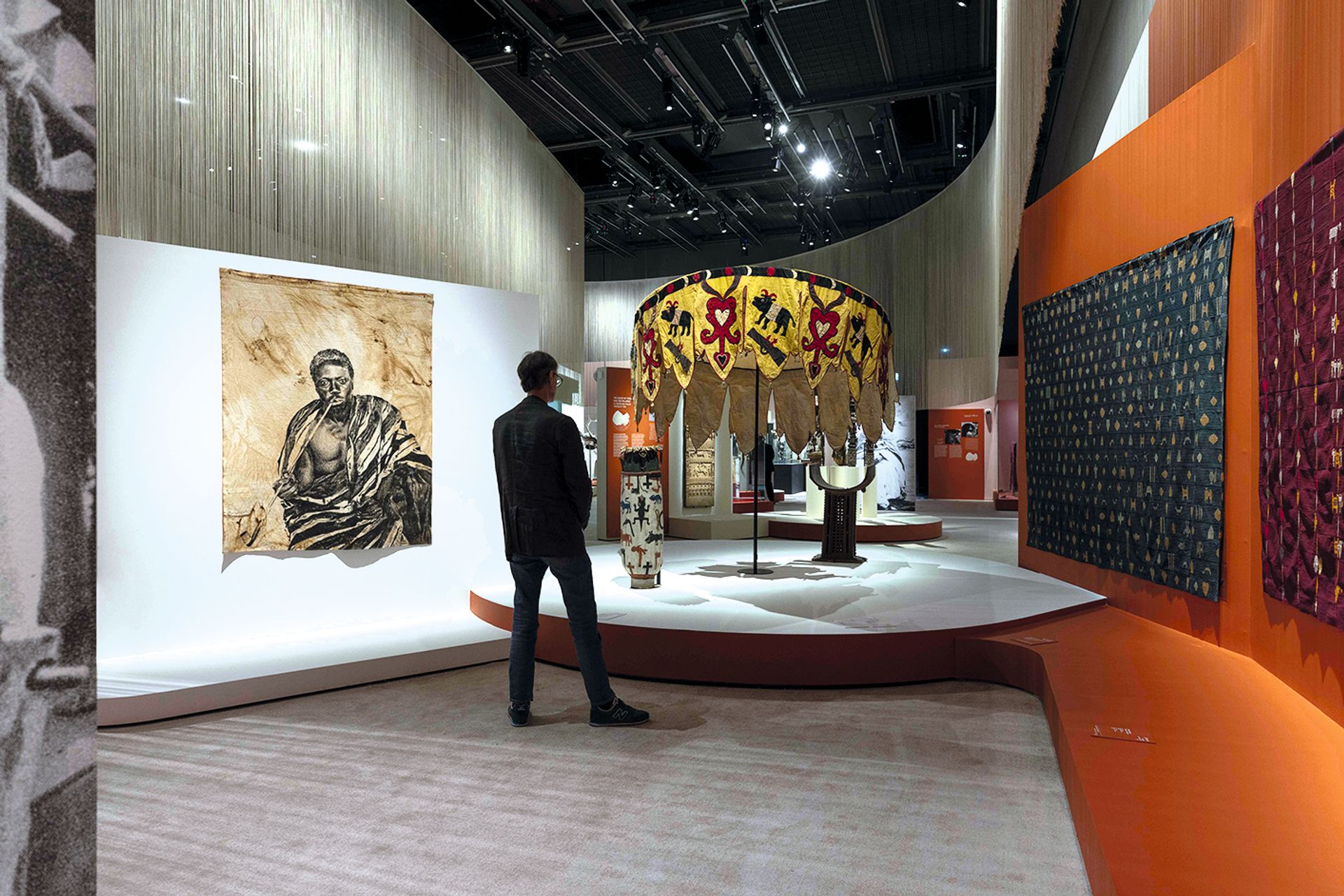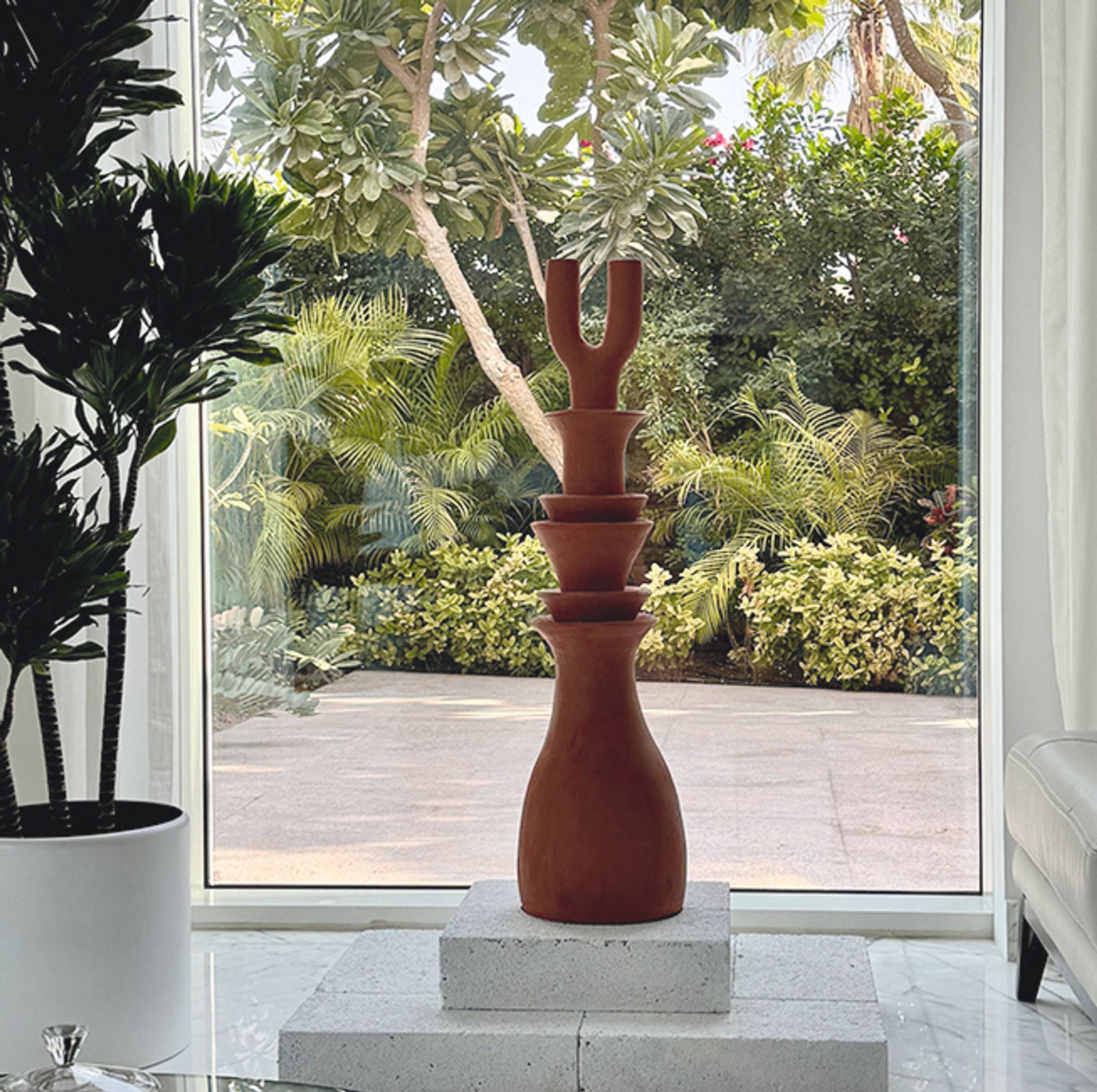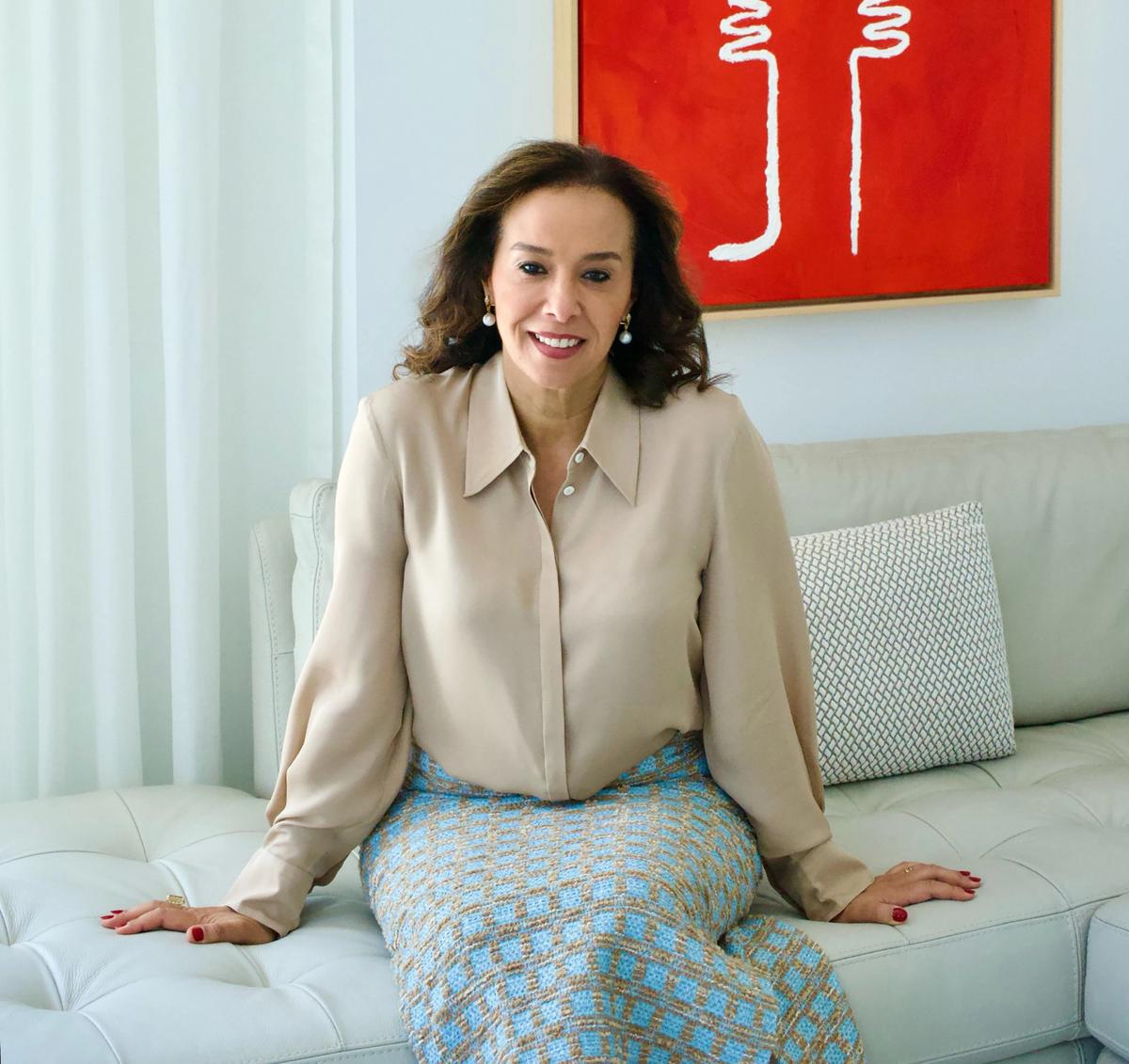“Sudan is the crossroad between Africa and the Middle East,” says Reem El Roubi of her home country. Based in Dubai since 2013, El Roubi, along with her husband Amir Daoud Abdellatif, an investment firm manager also from Sudan, has built a collection that honours their roots while reflecting their present home in the UAE. “The art is a reflection of this dual identity,” El Roubi says.
What started off as a collection of African art has now extended to include the Middle East and other regions. The collection includes works by artists such as William Kentridge, El Anatsui, Serwan Baran, Ibrahim El-Salahi, Howard Hodgkin and Fabienne Verdier. Upon request, the couple show their works in the Dubai Collection, the city’s institutional collection of Modern and contemporary art, and have also loaned pieces to exhibitions such as Kamala Ibrahim Ishag’s show at the Serpentine Galleries in London.
El Roubi, who has a background in mathematics and finance, is a member of the Africa Acquisitions Committee at Tate Modern and a patron of Louvre Abu Dhabi, the Sharjah Art Foundation and the Dubai Collection.

El Roubi says that the exhibition Kings of Queens of Africa at Louvre Abu Dhabi is the kind of event that will bring more European and American collectors to the region Photo: Ismail Noor/Seeing Things; ©Department of Culture and Tourism, Abu Dhabi.
The Art Newspaper: What is the first work you bought?
Reem El Roubi: Young Cairo-based Sudanese artists which include Omar Kamal El Din and Moataz Al-Imam and the Mexico-based artist Zhivago Duncan.
What is the last work you bought?
The last acquisitions were by South African artists including sculptures by William Kentridge and a painting by Esther Mahlangu.
Who are some artists you’ve discovered lately that everyone should know about?
The New York-based Sudanese sculptor Dina Nur Satti. We strongly believe in supporting emerging artists as well as investing in established artists.
What is the best piece of collecting advice you have received?
Choose artists with a practice.

Emerging talent: Sudanese artist Dina Nur Satti’s sculpture Tower Lotus III (2024) Courtesy of Efie Gallery and the artist
What are some of the strongest aspects of Dubai’s art scene? And what is still to be improved?
Dubai is a city that attracts collectors, gallerists and artists from the region and the world. Art Dubai, Sharjah Art Foundation and the Louvre Abu Dhabi go a long way in making the UAE an interesting place for art. This scene is an evolving one. I believe there can be a better engagement with European and American collectors who frequent such fairs as Art Basel and Frieze. This can be done by having more international shows such as the recent exhibition Kings and Queens of Africa at Louvre Abu Dhabi.
What are you most excited to see at Art Dubai?
The fair has a buzz and is a good way to engage with other collectors. Also to see new galleries with artists that one might not have known before.


